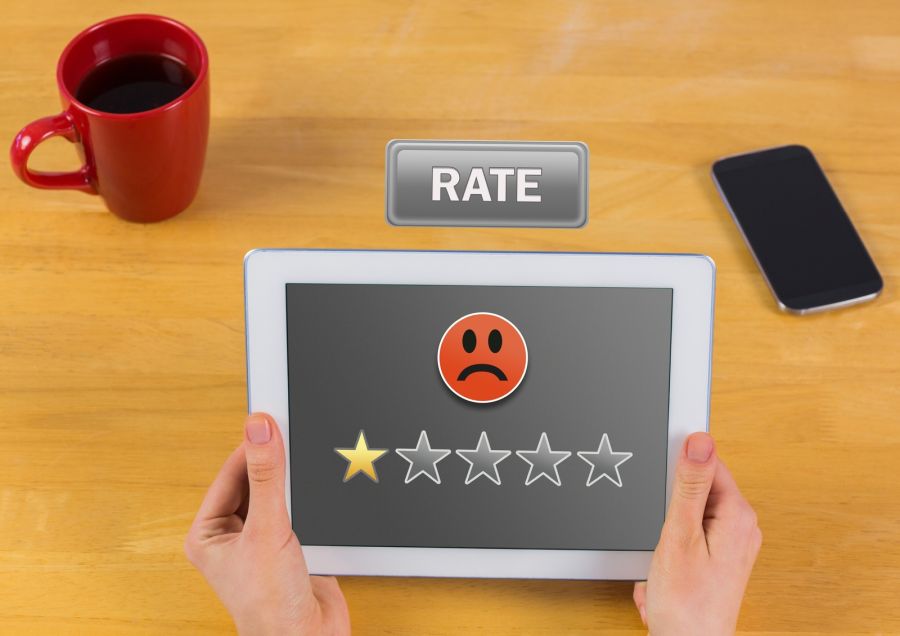Dealing With False Google Reviews. 20 Things You Should Know
As a business owner, you’ve probably experienced the frustration of receiving false Google reviews. Not only do they undermine your hard work, but they could also potentially turn away potential customers. Fear not because dealing with these misleading reviews is something we can help you with.
Dealing with false Google reviews:
To deal with false Google reviews, first identify fake reviews by examining the reviewer’s profile, checking for inconsistencies, and looking for overly positive/negative language. Flag the review on Google Maps and, if not removed, respond calmly and professionally, addressing inaccuracies and inviting further discussion. Encourage genuine reviews from satisfied customers and monitor reviews with a review management platform.

Are you struggling with false Google Reviews affecting your business? Read on to discover effective strategies for dealing with these fake reviews, protecting your online reputation, and ensuring your customers get an accurate picture of your business. Don’t let misinformation impact your success.
Contents
Addressing Misleading Google Reviews
• Understanding the Impact of False Reviews
False Google reviews can significantly affect a business’s reputation and credibility. In the digital age, many consumers rely on online reviews to decide whether to patronize a business or not. Falsified reviews can lead potential customers away and damage a business’s chances for success.
Studies have shown that online reviews influence over 90% of customers’ purchasing decisions, emphasizing the importance of addressing and combating false reviews.
• Identifying False Reviews
Before taking action to deal with false Google reviews, it is essential to identify which reviews are genuinely fake. Look for the following signs to pinpoint false reviews:
- The reviewer’s profile: Check the reviewer’s profile for suspicious signs, like a lack of a profile picture, no other reviews, or a history of posting only negative reviews.
- Inconsistencies: Look for inconsistencies or inaccuracies within the review itself. Is the review addressing a service or product your business does not provide? Does the review mention an employee who does not work at your establishment?
- Overly positive/negative reviews: If a review is excessively positive or negative, using exaggerated language and opinions, it could be a false review written to boost or harm your business’s reputation.
It is essential to accurately differentiate between genuine negative reviews and false ones. Addressing genuine negative feedback can help you improve your business while addressing false reviews can protect your online reputation.
• Responding to False Reviews
Once you identify a false review, consider taking the following actions:
– Step 1: Flag the Review
Google allows users to flag inappropriate reviews. By flagging a review, you’re bringing it to Google’s attention and initiating a review process for potential removal. To flag a false review:
- Navigate to your business listing on Google Maps and locate the false review.
- Click on the three-dot menu icon next to the review and select “Flag as inappropriate.”
- Complete the form explaining why the review is false, providing evidence when possible.
However, keep in mind that Google might not remove the flagged review, as the removal process follows strict guidelines. In case Google does not remove the review, proceed to the next step.
– Step 2: Respond to the Review
Publicly respond to the false review with a calm and professional tone. Doing so demonstrates your commitment to addressing concerns and provides an opportunity to clarify any misinformation in the review. When responding:
- Thank the reviewer for their feedback: This approach establishes a courteous tone and shows that you are receptive to criticism.
- Calmly address the inaccuracies: Explain the incorrect information in the review without becoming defensive. For example, if the review mentions a nonexistent product, politely mention that your business does not offer the product described.
- Invite the reviewer to contact you: Encourage further discussion by providing your contact information, aiming to resolve any genuine concerns.
Responding to a false review appropriately can help transmit a sense of transparency and fairness to potential customers who might read the review.
– Step 3: Encourage Genuine Reviews
One of the most effective ways to minimize the impact of false reviews is to encourage and accumulate genuine, positive reviews from your customers. A higher number of authentic reviews will overshadow any false reviews and make them less influential for your business’s overall rating.
- Ask for reviews: Request satisfied customers to leave an honest review on Google. Doing so can help balance the negative impact of any false reviews.
- Share positive reviews: Promote genuine positive reviews on your business’s social media and website, showcasing the positive experiences of satisfied customers.
• Monitoring and Prevention Strategies
Establishing a regular review-monitoring schedule will help in promptly identifying and addressing false reviews. Responding to both negative and positive reviews will contribute to building a positive image for your business.
Consider using an online review management platform enabling you to monitor, analyze, and respond to reviews from multiple sources, including Google. This proactive approach will allow for effective management of your business’s online reputation, minimizing the adverse effects of false Google reviews.
Responding to Inaccurate Google Reviews
Google reviews can significantly impact the reputation and growth of a business. While most reviews will be genuine, every now and then, one might come across a false or misleading review. In such cases, it is crucial to know how to address the situation appropriately.
• Act Promptly
One of the most critical steps is to respond on time. Even though it might be unpleasant to deal with fake reviews, putting off responding to them will only worsen the situation. Ensure that you regularly monitor your Google review page so you can identify and act upon false reviews as soon as they appear.
• Stay Calm And Composed
While it is natural to feel defensive or frustrated, responding in a calm and professional manner is the best course of action. Engaging in a heated argument with the reviewer might damage the reputation of your business further. Instead, be polite, non-confrontational, and remain objective.
– Example Of A Polite Response
Dear [Reviewer’s name],
Thank you for sharing your feedback. We are sorry to hear about your experience. However, we are unable to find any record of your visit to our business. Please contact us directly at [email/phone number] so we can resolve any issues you may have had. Thank you.
In this response, the reviewer is acknowledged and given the opportunity to provide further details while indicating to potential customers that the business takes feedback seriously.
• Report The Review To Google
Google has a review policy in place to maintain the integrity of its review system. If you believe that a review violates Google’s guidelines, you can flag it for removal.
Follow these steps to flag a review:
- Navigate to your Google My Business page
- Select the “Reviews” tab
- Locate the false review
- Click on the three vertical dots next to the review, and select “Flag as inappropriate.”
Google will typically review the flagged review within a few days. However, they might not remove the review if they consider it compliant with their guidelines. You can find more information about their policy and review criteria on Google’s support page here.
• Gather Evidence To Support Your Case
To increase the chances of Google removing the false review, gather evidence to support your claim. This may include:
- Screenshots of abusive language, explicit content, or personal attacks
- Proof that the reviewer has not been a customer, such as transaction records or appointment logs
- Multiple fake reviews from the same user or evidence of a coordinated attack on your business by a group of individuals
When you have collected the necessary evidence, you may contact Google My Business support, either through Twitter or, if you cannot reach them through these channels, you can request a call from them on the Google My Business Help page.
• Encourage Genuine Reviews
An effective way to counteract the impact of a false review is by encouraging genuine customers to share their positive experiences. This can help improve your overall rating, as well as new customers get a more accurate understanding of your business.
Here are a few ways to promote genuine reviews:
- Request reviews from customers following a transaction or service completion
- Share direct links to your Google review page through email or on social media
- Provide incentives, such as discounts or promotional offers for customers who leave a review
- Display “Review us on Google” signs and stickers at your business premises
• Learn From The Incident
Although it may be challenging to deal with false reviews, these situations can provide opportunities for learning and improvement. Reflect on your response strategy and examine ways you can improve your online reputation management process.
Additionally, consider investing in reputation management software or working with a reputation management agency to effectively manage your online presence and minimize the impact of false reviews in the future.
By following these guidelines and addressing false Google reviews with professionalism and promptness, you can protect your business reputation and continue building trust with your target audience.
Remember to stay vigilant, maintain a professional attitude, and encourage genuine customer reviews to overshadow any false or misleading comments.
Tracing the Origins of Fraudulent Google Reviews
The world is moving towards a more digital era, and online reviews are becoming an essential part of today’s businesses. Over the years, the Internet has become a significant source of information and a platform for businesses to grow.
Businesses and customers alike rely on online reviews to make purchase decisions or decide on which services to use. According to a study conducted by Bright Local, about 88% of consumers trust online reviews as much as personal recommendations.
However, with this growing dependence on online reviews, a rising concern is the prevalence of fake reviews. The big question is: Can fake Google reviews be traced?
• Detection of Fake Reviews
Various techniques can be used to detect fake reviews, and these methods are mainly focused on analyzing language patterns, reviewer behavior, and techniques used in posting the review.
With the help of automated detection tools and even some manual investigation, it’s possible to trace fake reviews. However, it should be noted that not all fake reviews can be detected or traced with 100% accuracy.
– Review Analysis
One common method of tracing a fake review is analyzing the text itself. Many times, the language used in fake reviews can be overly positive or negative, utilizing strong words and phrases to sway the opinion. Identifying these patterns can sometimes indicate inauthenticity.
Another red flag can be generic language with a lack of specific details about the products or services. This can be a strong indicator that the reviewer might not have genuinely experienced the product/service they are reviewing.
Analyzing linguistic patterns and language usage can be a helpful way of identifying fraudulent reviews.
– Reviewer Behavior
Another useful method of tracing fake reviews is to analyze the behavior of the reviewer. When it comes to Google reviews, it is important to determine if the reviewer is a verified user and if they have a history of posting genuine and helpful reviews.
Having a low number of reviews, or a consistent trend of overly positive or negative reviews, can be indicators that the user may be posting fake reviews.
Moreover, if the reviewer history shows them posting a large number of reviews over a short period of time, this could also indicate automated or paid review activity. Tracing the behavior and history of a reviewer can help identify potentially fake reviews.
– Detection Algorithms
There are a number of organizations that have developed their own algorithms for detecting fake reviews, which can be effective in discovering fraudulent activities on online review platforms. Researchers at the University of Illinois at Chicago developed an algorithm that is about 90% accurate in detecting fake reviews.
These detection algorithms usually work based on machine learning technology and rely mainly on the analysis of patterns in text and content, the reviewing behavior, and the time stamp of the reviews.
Although these detection algorithms are not foolproof, they are useful in providing a starting point for tracing and weeding out fake Google reviews.
• Reporting Fake Reviews to Google
If you come across a fake review, it is essential to report it directly to Google. Business owners affected by fake reviews can flag the review for Google’s moderation team. However, Google requires evidence to support their claim that the review is fake.
It is necessary to compile any relevant proof, such as detecting irregular patterns, language usage, or inconsistencies with user behavior, before reaching out to Google.
Although Google does work towards identifying and removing fake reviews, it is not a fully automated process, and the moderation team relies on users to report suspicious reviews. It is crucial for businesses and individuals to remain vigilant and be proactive in identifying and reporting fake Google reviews.
• Conclusion
In an era of online information and digital influence, fake reviews can pose a significant threat to the credibility and success of businesses, as well as create deception and confusion among potential customers.
While it is not always effortless to trace fake Google reviews, a combination of linguistic pattern detection, reviewing behavior analysis, and technological algorithms can indeed help in differentiating genuine reviews from fake ones.
It is essential for business owners to familiarize themselves with these methods to protect their businesses from the adverse effects of inauthentic reviews. In addition, customers must approach online reviews with a discerning eye, as the presence of fake reviews can potentially affect their purchase decisions.
Empowering users and businesses with the knowledge needed to identify and report fake reviews is key to maintaining the integrity of Google reviews and the online community as a whole.







